Cloth Lullaby
This biographical picture book introduces the reader to the life of Louise Bourgeois, a French-American artist whose work ranged from sculpture, installation, weaving, painting and printmaking. In a narrative crafted for children, it poetically focuses on the childhood of a young girl growing up into an artist. The main focus is the practice of restorative art passed from mother to child. It is lovely for children, but it's possible this book will resonate more deeply with adults, especially for those with a background in - or appreciation of - visual arts.
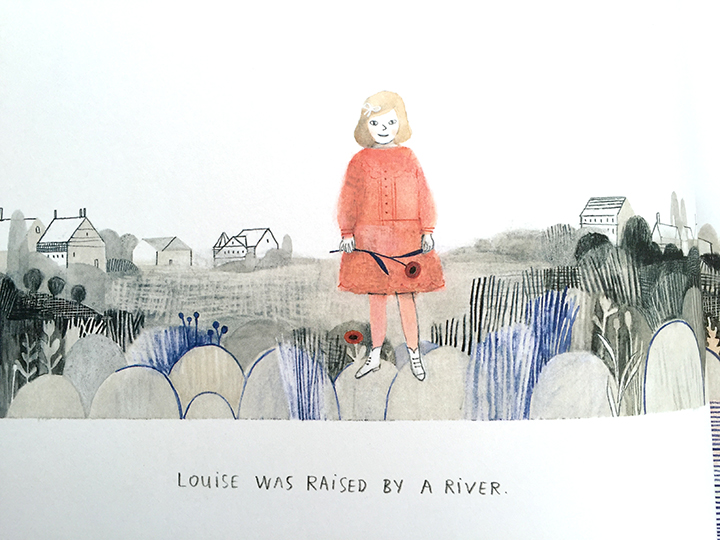
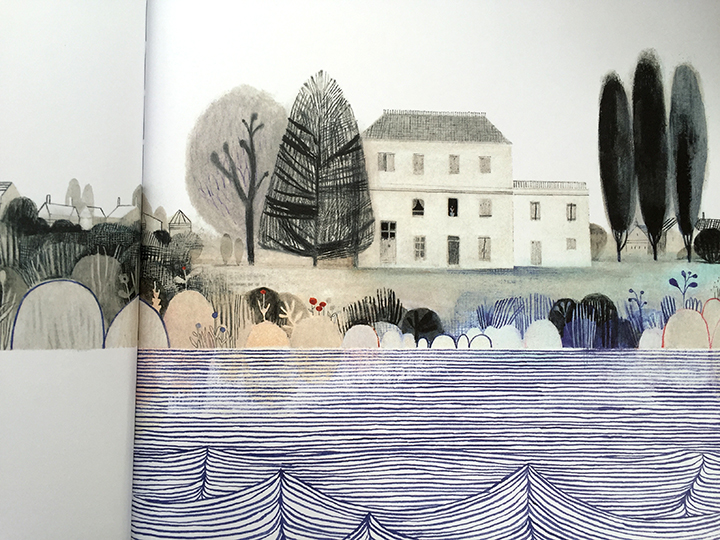
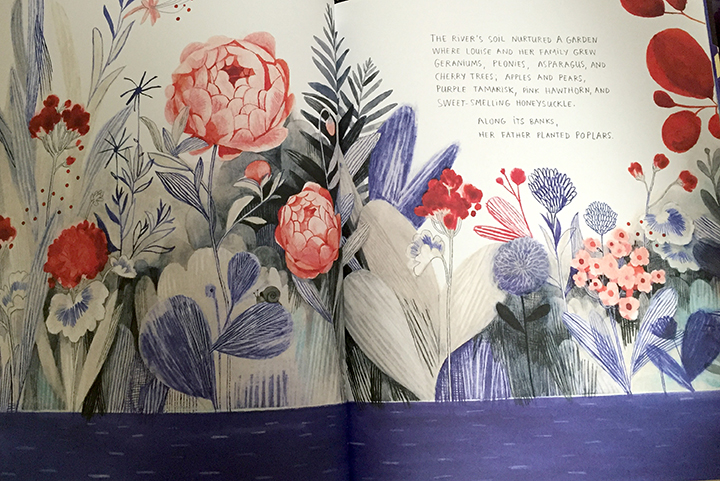
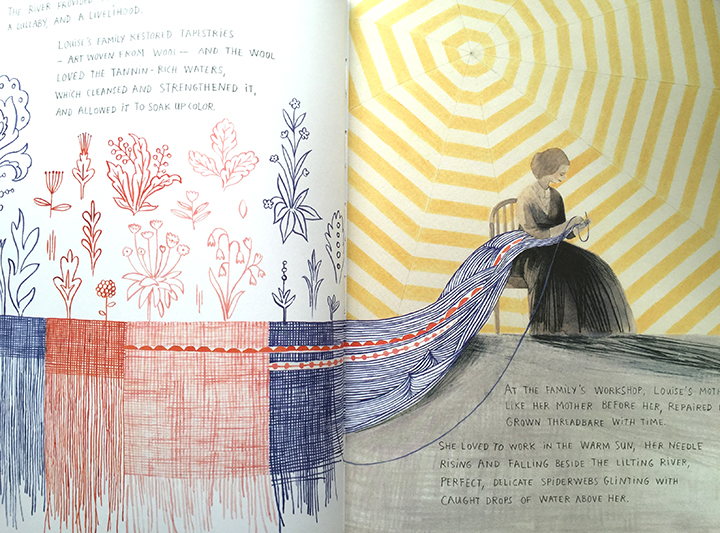
The river running alongside the Bourgeois house is used symbolically as the connecting thread that runs throughout young Louise's life. The thread her mother sews to repair worn tapestry. The thread that weaves together all the parts of her life. Thread that brings the past into the present. Thread that has the ability to mend what is torn.
Exquisite illustrations by the talented Isabelle Arsenault depict the warp and weft of fabric weave in cross hatched lines that make up trees, earth and the river that directly reference the visual style of the artist. The minimal red and blue color pallet follows the color and style of Bourgeois' own drawings and paintings.
Bourgeois actually threw herself into the river in despair over her mother's death, and was pulled out by her father, appropriately not mentioned in the book.
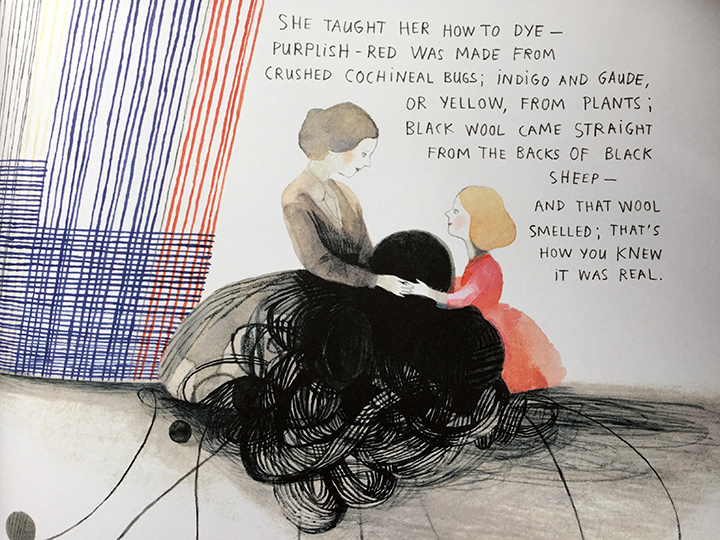
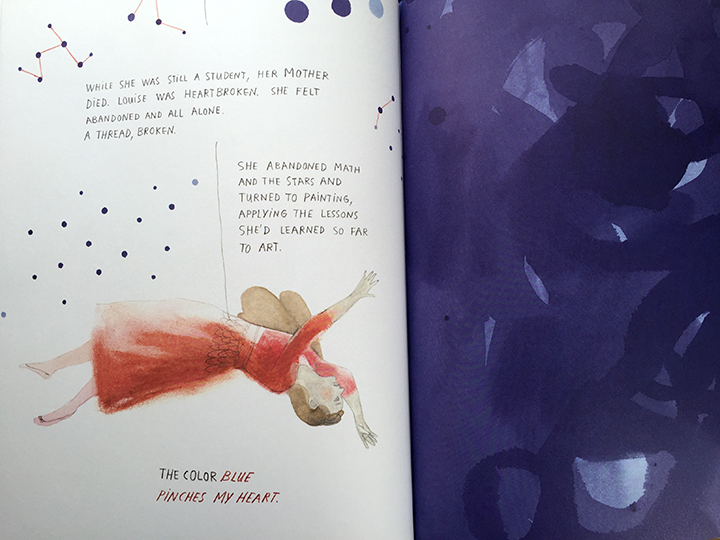
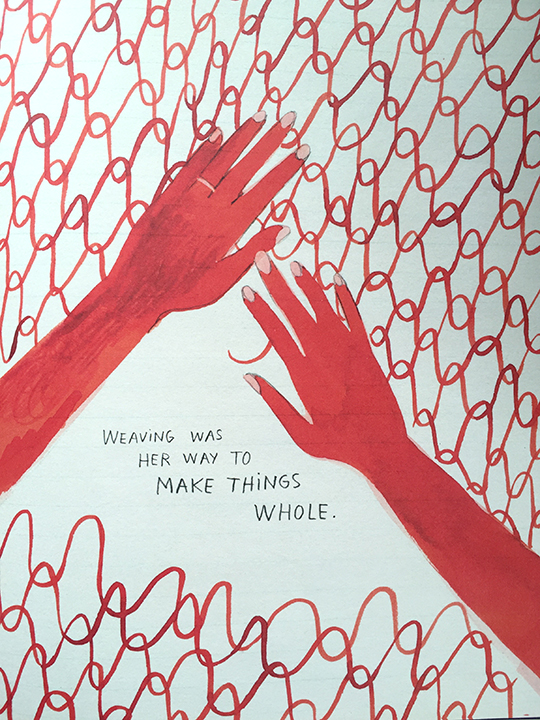
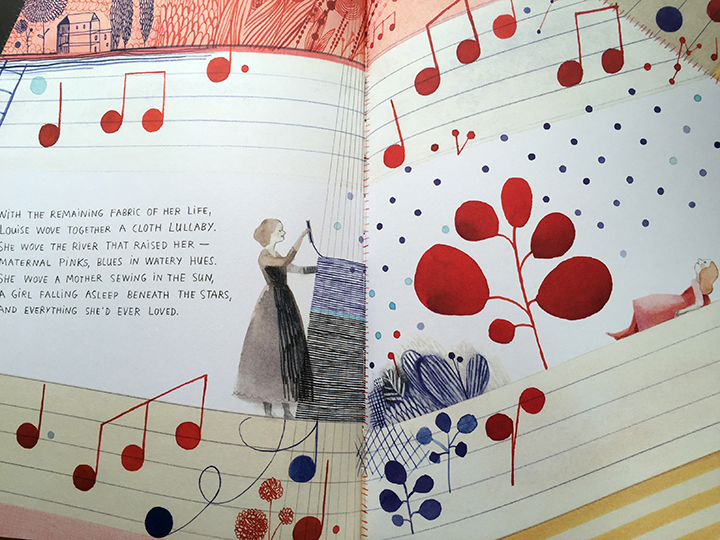
It should be noted, for parents with small children, that some of Bourgeois' work is sexually explicit in nature, and was shaped by traumatic psychological childhood events, like her father's infidelity with the English tutor who lived in their family home. While this book is highly appropriate for young readers, if you wish to further explore the art of Bourgeois I suggest doing your own research before you start Googling her work with your kids present. You'll want to determine what you are comfortable with sharing beforehand.
Bourgeois exhibited her first works at the age of 32, and continued to consistently produce and show until her death in 2010, at the age of 98. Her work focuses on themes of family, sex, body parts, music, motherhood, nature, spirals, spiders, and abstract motifs. She used art as a coping tool, and credits it with her very sanity. For these reasons, I find her deeply inspiring to women and all who create.
The end of the book contains a nice author's note of information about the artist's life, also child appropriate. There are many more interesting details to be learned doing outside research.
If you love sewing, art, textiles, pattern, or design, then this book is for you, especially if you connect with the the passing of a maker tradition from one set of hands to another. Some of the pieces Bourgeois is most famous for are her spiders, including a massive installation called Maman. Crafted of bronze, steel and marble, the sculpture stands 30 feet high. It honors her mother's strength, intelligence and cleverness - her ability to weave and repair damage. Why are we taught to fear spiders? I think teaching children to respect and admire a spider rather than fear it is a good new lesson.
I happened to be reading Rebecca Solnit's essay Spider Grandmother this week, which references the story of the Grandmother Spider among Native American tribes, in which she is the principle creator of the universe. I want to share this passage, which seems to compliment the idea of woman as spider, "To spin the web and not be caught in it, to create the world, to create your own life, to rule your fate, to name the grandmothers as well as the fathers, to draw nets and not just straight lines, to be a maker as well as a cleaner..." Women, like spiders, should be honored instead of feared and hated for the inventive magical beings they are.




